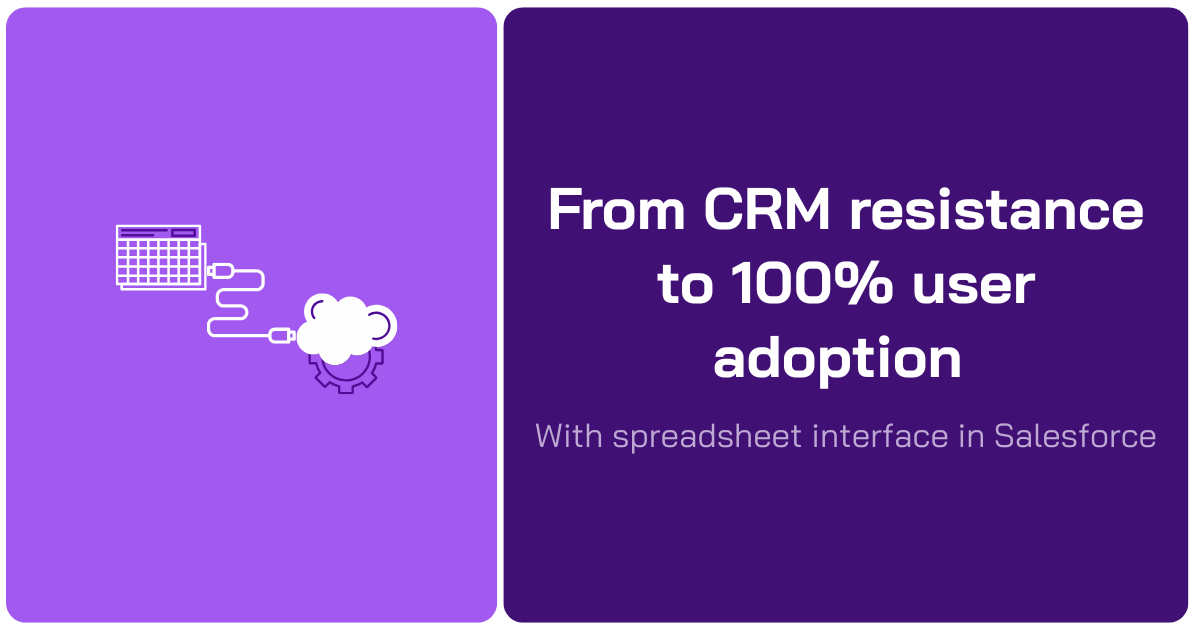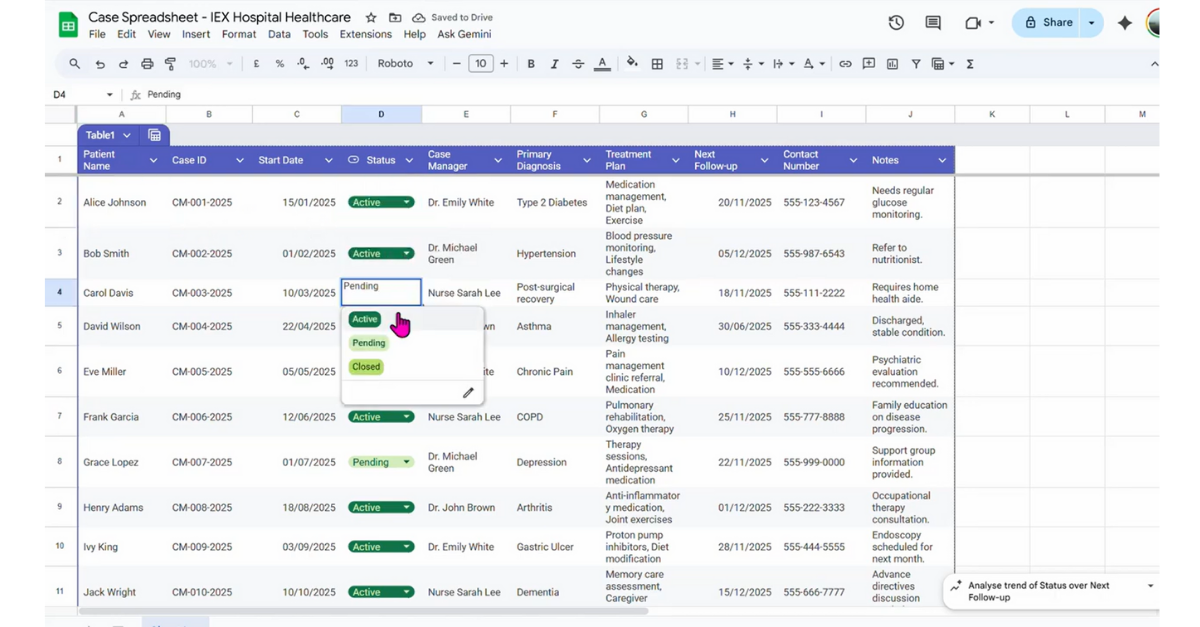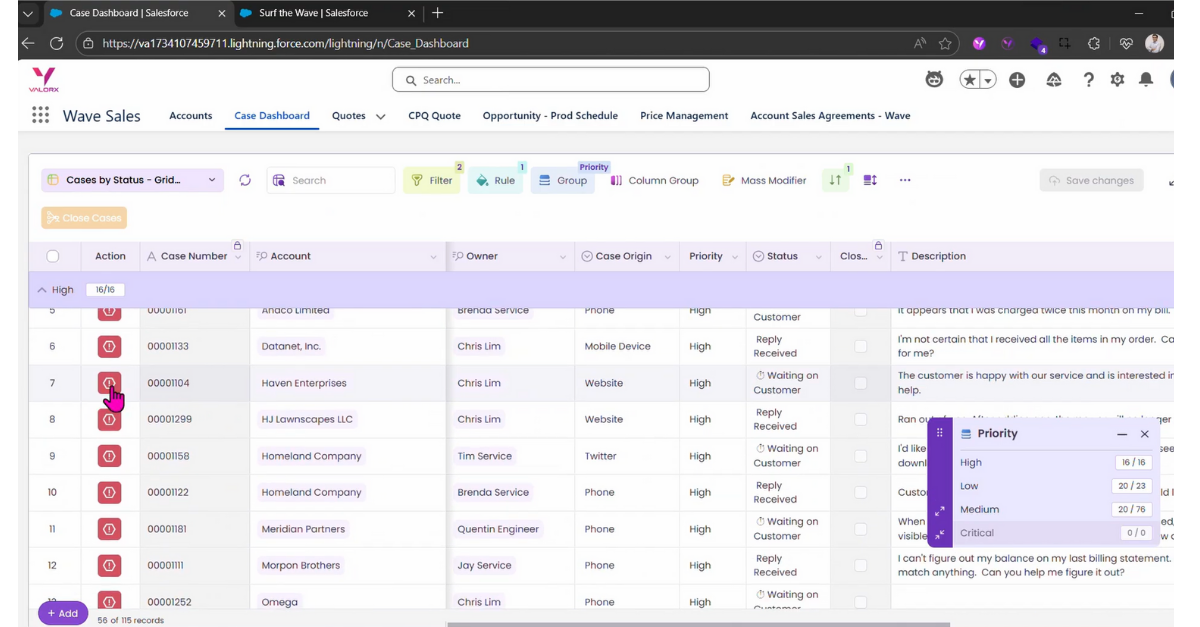Update hundreds of opportunities and products in a single grid view.
How Swoop connected Google Sheets to Salesforce with Valorx Wave to boost adoption

About Swoop
Swoop is a leading provider of privacy-safe, award winning omnichannel healthcare marketing solutions. Their platform enables pharmaceutical marketers to reach patients and healthcare providers across multiple channels while maintaining data privacy.
By integrating artificial intelligence with real-world data, first-party data, and user engagement metrics, Swoop helps pharma marketers optimize their targeting and messaging strategies. This data-driven approach allows pharma teams to make faster, more informed decisions that ultimately enhance patient outcomes and engagement throughout the healthcare journey.
When it came to internal operations, Swoop held itself to the same standard of precision and efficiency — yet their sales organization struggled with Salesforce adoption. The data was fragmented across Google Sheets, slowing down forecasting and visibility.
The challenge: Great CRM, low adoption
Like many fast-growing organizations, Swoop’s sales and revenue teams were deeply reliant on Google Sheets. It was fast, flexible, and familiar — but disconnected from Salesforce.

While Salesforce was meant to be the company’s system of record, it wasn’t the system of use.
The core issue: Adoption over accuracy
Sales reps preferred updating opportunities in Google Sheets instead of Salesforce. Product and schedule data lived in multiple shared files, outside CRM oversight. But this wasn't just a preference problem—it had real consequences.
Pipeline visibility gap
Without reliable pipeline visibility in Salesforce, leadership couldn't confidently forecast or spot bottlenecks in key deals. Opportunities buried in Google Sheets meant deals could stall or slip unnoticed, directly impacting quarter-end closures and revenue predictability.
Constrained operational scalability
Manual data entry and duplication caused inconsistencies and reporting delays. Sales reps were spending time moving data between systems instead of selling—and reconciling Google Sheets meant delayed insights for leadership trying to make strategic decisions. This inefficiency compounded as the team scaled.
Unreliable data for decision-making
Leadership couldn't access reliable, real-time pipeline visibility of key accounts when they needed it. Strategic decisions around resource allocation and deal prioritization were based on incomplete or outdated information, limiting the organization's ability to respond quickly to market opportunities.
Workflow misalignment
Sales reps were caught between two systems—Salesforce, which leadership wanted them to use, and Google Sheets, which actually matched their workflow. System friction meant reps were spending mental energy navigating tools instead of selling. This mismatch created frustration and risked affecting retention as top performers looked for roles with better-designed systems.
The adoption barrier
The fundamental problem: Salesforce felt heavy and disconnected from how the team actually worked. Google Sheets was fast, flexible, and matched their workflow. Every time leadership pushed for "just use Salesforce," they were asking reps to choose between productivity and compliance—and productivity usually won.
Swoop needed a way to make Salesforce feel as effortless as Google Sheets — without sacrificing data integrity or requiring heavy IT intervention.
The solution: Bringing the Google Sheet experience inside Salesforce
Swoop adopted Valorx Wave, the Excel-like grid experience built directly inside Salesforce, enabling live viewing, bulk editing, and validation of CRM data without exports.

Valorx Wave combines the speed of spreadsheets with the power of Salesforce. Wave allowed users to work in familiar, grid-based views while every change synchronized instantly to Salesforce — eliminating the gap between user behavior and CRM governance.
Without needing IT resources or long implementation cycles, Swoop’s SalesOps team rolled out Wave to core users in a matter of weeks.
Reps could now:
Manage complex, time-phased product schedules without switching tabs.
Replace traditional Salesforce list views with faster spreadsheet-style layouts.
Collaborate in real time while maintaining data accuracy and control.
The impact: True adoption, trusted data
The change was immediate and cultural. Teams that once resisted Salesforce began logging in daily — not because they were told to, but because it worked the way they liked.
Swoop: Time to value measured in days
Without any heavy IT integration, within just 2 weeks of contract signing, customer-led configuration was completed, initial grids and views were built, and 80 pilot users were enabled. By week 3, Swoop teams started working in the familiar Google Sheets interface inside Salesforce as part of their daily workflow.
Adoption and efficiency
- Salesforce usage among sellers increased dramatically once Wave grids replaced static list views.
- Reps performed mass edits and updates 5–10x faster than before.
- Sales Ops could run pipeline and forecasting reviews directly in Salesforce, without exporting data.
Data accuracy and trust
- Pipeline data completeness reached near-real-time accuracy.
- Leadership gained instant visibility into pipeline health and forecast performance.
- Manual data consolidation across Google Sheets was fully eliminated.
Business impact
- Reports and dashboards became reliable decision-making tools.
- Forecast reviews that took hours were completed in minutes.
- Salesforce became a single source of truth across Sales, RevOps, and Leadership.
Valorx made Salesforce usable for our team. Our reps still work the way they like — but now everything flows into Salesforce automatically. It’s been the fastest adoption we’ve ever seen.
Sales Operations Lead, Swoop
Why it matters
Swoop’s experience shows that user adoption isn’t about more training — it’s about removing friction. By meeting users where they are and respecting their preferred workflows, Valorx Wave turned Salesforce into a natural extension of how the team already worked.
What was once a system of record, became a system of action — live, accurate, and trusted across every level of the organization.
The takeaway
For companies looking to drive Salesforce adoption without the usual change-management challenges, Swoop’s journey offers a blueprint:
Let people keep their familiar tools — just make them smarter.
With Valorx Wave, every rep can work faster, every record stays current, and every forecast is built on truth.

Web-based CRM-Connectivity
Get started with Wave
Create a Valorx account and enjoy using Wave for free.
